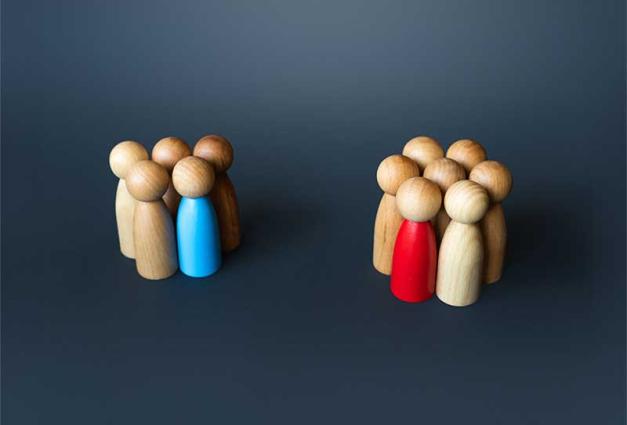People laugh when tickled, are amused when someone steps on a rake, and remark, “that’s funny,” when they hear clever play on words. But people can also be upset when tickled, distraught by rake-stepping, and bored by wordplay. Why do things that appear to have little in common—tickles and Tik Toks, slapstick and Silly String, pratfalls and puns—similarly evoke laughter and amusement? And why do apparently similar things—a tickle from a parent versus a tickle from a stranger—evoke different responses?
Beautiful minds from Plato to Freud have concocted over 20 theories, or recipes, for what makes things humorous. Our goal was to identify which ingredients best explain when people laugh and feel amused and when they do not. Most recipes rely on a combination of the same five ingredients:
- Surprise: You encounter something you don’t expect.
- Superiority: You feel like you are better than someone else.
- Violation: You think something is threatening or wrong.
- Benign: You are okay with what went down.
- Simultaneity: You hold conflicting interpretations, ideas, or beliefs.
We combed through over 100 years of surveys, experiments, brain imaging, animal behavior, linguistic analysis, and artificial intelligence to test whether each of these five ingredients helps explain when people laugh rather than cry or yawn.
In contrast to the belief (often misattributed to Aristotle) that “the secret to humor is surprise,” we found no evidence that surprise is either a necessary or sufficient ingredient. Many surprises, like getting mugged in broad daylight or winning the lottery, are not funny. And many funny things are not surprising. Jokes, stories, and movies continue to amuse people after repeated exposures, a fact understood by stand-up comedians, who “call-back” jokes from earlier in a performance, and the writers of the cartoon South Park, who killed the same character in 78 of the first 79 episodes (“Oh my God, they killed Kenny!”). Controlled studies show that stand-up comedy routines trigger more laughter when the punchlines are easier to predict. That is, jokes can be funnier when they are less surprising.
Another class of theories argues that superiority, or feeling like you are better than someone else, is the most important ingredient in the humor recipe. Like surprise, the data reveal that superiority is neither necessary nor sufficient for humor. In sports, gambles, board games, and board room meetings, winning feels good but not funny. In play, both apes and humans are more likely to laugh when they are being chased or the victim of a tickle attack than when they are in the (superior) aggressor role.
Surprise and feeling superior are not necessary ingredients, but appraising a violation might be. Violations include everything from physical threats, like getting tickled or stepping on a rake, to communication gaffes, like mispronouncing a word or misspelling “worst” in the pun, “jokes about German sausages are the wurst.” Being tickled and getting chased, the most common causes of laughter in babies and non-human mammals, require the presence of an attacker. Funny words are disproportionately likely to denote insults (e.g., “floozy,” “buffoon”), expletives (e.g., “hogwash,” “fuck”), or bodily parts (e.g., “taint,” “booty”) or functions (e.g., “burp,” “turd”) considered improper for polite conversation. Violating behaviors, like sports bloopers and food fights, are funnier than successful, polite behaviors, like sports highlights and dinner parties, regardless of whether people expect or are surprised by the behavior.
But getting a flat tire, choking on a piece of steak, and most other violations are not usually funny. Another ingredient transforms gaffes, threats, and mistakes into laughs: appraising the violation as benign. Violations seem benign when a threat is harmless (for example, the tickle is from a parent rather than a stranger), an error seems correct according to another norm (“wurst” is the correct way to spell sausage), or you don’t care about the victim (a villain steps on a rake).
There is a fifth ingredient that explains how something might seem like both a violation and benign: simultaneity. Jokes, wordplay, and even animated geometric figures are perceived to be funnier when they juxtapose ideas: “Did you hear about the guy whose left side got cut off? He’s all right now.” Literally, “He’s all right” means he has only his right side remaining. But “He’s all right” also evokes a second, completely different, meaning, namely that he is perfectly fine (“he’s alright”). Neuroscientists likewise have found that the parts of the brain responsible for processing conflicting signals light up when people see jokes, cartoons, or videos that they think are humorous.
After reviewing hundreds of studies, we concluded that the best humor recipe is perceiving something to be a violation while also simultaneously perceiving it to be benign. People laugh and feel amused when they feel both threatened and safe or think that something is both wrong and acceptable.
For Further Reading
Warren, C., Barsky, A., & McGraw, A. P. (2021). What makes things funny? An integrative review of the antecedents of laughter and amusement. Personality and Social Psychology Review, 25(1), 41–65. https://doi.org/10.1177/1088868320961909
Warren, C., & McGraw, A. P. (2016). Differentiating what is humorous from what is not. Journal of Personality and Social Psychology, 110(3), 407–430. https://doi.org/10.1037/pspi0000041
McGraw, A. P., & Warren, C. (2010). Benign violations: Making immoral behavior funny. Psychological Science, 21(8), 1141–1149. https://doi.org/10.1177/0956797610376073
Caleb Warren teaches, writes, and thinks about what makes things funny, what makes things cool, and what helps people reach their goals as an Associate Professor of Marketing at the University of Arizona.
Adam Barsky, an Associate Professor of Management and Marketing at the University of Melbourne, has published extensively on the intersection of leadership, ethics, humor, and emotions.
Peter McGraw directs The Humor Research Lab (HuRL), is the author of Shtick to Business, is the co-author of The Humor Code, hosts the podcast I’M NOT JOKING, and is a Professor of Marketing at the University of Colorado, Boulder.




